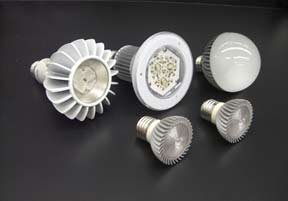 (NIST: Gaithersburg, Maryland) --Scientists at the National Institute of Standards and Technology (NIST), in cooperation with national standards organizations, have taken the lead in developing the first two standards for solid-state lighting in the United States. This new generation of lighting technology uses light-emitting diodes (LEDs) instead of incandescent filaments or fluorescent tubes to produce illumination that significantly cuts energy consumption.
(NIST: Gaithersburg, Maryland) --Scientists at the National Institute of Standards and Technology (NIST), in cooperation with national standards organizations, have taken the lead in developing the first two standards for solid-state lighting in the United States. This new generation of lighting technology uses light-emitting diodes (LEDs) instead of incandescent filaments or fluorescent tubes to produce illumination that significantly cuts energy consumption.
Standards are important to ensure that products will have high quality and their performance will be specified uniformly for commerce and trade. These standards—the most recent of which was published in May—detail the color specifications of LED lamps and LED light fixtures, and the test methods that manufacturers should use when testing these solid-state lighting products for total light output, energy consumption, and chromaticity (color quality).
Solid-state lighting is expected to significantly reduce the amount of energy needed for general lighting, including residential, commercial, and street lighting. “Lighting uses 22 percent of the electricity and 8 percent of the total energy spent in the country, so the energy savings in lighting will have a huge impact,” says NIST scientist Yoshi Ohno,
…
Add new comment